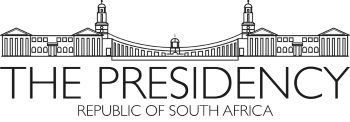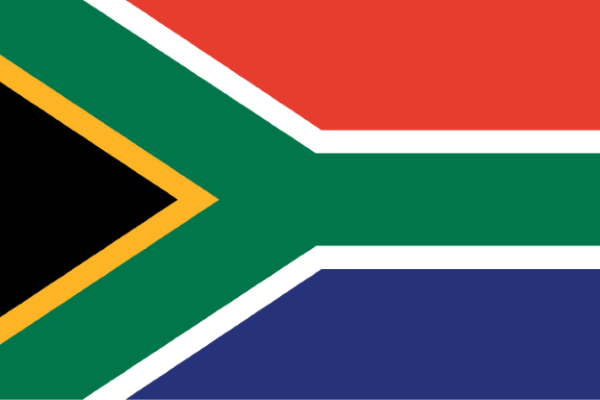The Order of Ikhamanga in Silver

David Goldblatt (1930 - ) Awarded for:
His excellent contribution to the portrayal of South African life through the medium of photography and for leaving an indelible mark in our country’s inclusive literary culture.
Profile of David Goldblatt
Mr David Goldblatt, a grandson of Lithuanian-Jewish immigrants, was born on 29 November 1930 in the small mining town of Randfontein. Mr Goldblatt was the third son of Eli Goldblatt and Olga Light, who both came to South Africa as children with their parents to escape the persecution of the Lithuanian-Jewish communities in the 1890s in Eastern Europe.
Mr Goldblatt is one of South Africa’s most famous documentary photographers, who is internationally acclaimed for his work. He was simultaneously part of privileged white society and a victim of religious persecution and alienation. Motivated by his contradictory position in South African society, Mr Goldblatt began photographing this society, and in 1963 decided to devote all of his time to photography.
In 1948, he matriculated and set his sights on a career in photojournalism. He was largely influenced by the work of the famous photographers working for American-European magazines such as Life and Picture Post. In the 1950s, he started photographing the unfolding political campaigns mounted by the Congress Alliance. However, he found that pursuing news was unrewarding.
After the death of his father in 1962, he sold the family store and on 15 September 1963, at the age of 33, he ventured out to work full-time as a professional photographer. He became friendly with many of Johannesburg’s leading white liberal literary and artistic figures.
It was through his friendship with the writer Lionel Abrahams, who was the editor of the works of Herman Charles Bosman, that he began exploring and photographing the Afrikaner farming community of the Groot Marico district in the then Western Transvaal (North West).
His big break as a photographer came in 1964 when he was given a number of assignments by Sally Angwin, the editor and owner of the avant-garde Tatler magazine. He avidly did features for the magazine on the Anglo-American Corporation and this eventually led to a long and important association with Anglo’s in-house magazine, Optima. His association with Optima gave him access to the mining operations of one of the most powerful South African companies.
This, in turn, allowed him, over the next decade, to complete his book On the Mines (1973), as well as to travel around the country taking photographs for his seminal book Some Afrikaners Photographed (1975).
Mr Goldblatt also worked on a book about the South African middle-class life, In Boksburg, as well as projects on Transkei, Soweto and the city of Johannesburg. By the end of the turbulent 1970s, he had built a reputation as one of the country’s leading documentary photographers.
In 1972, Mr Goldblatt spent six months photographing in Soweto and from 1976 to 1977; he travelled on a bicycle photographing mainly the Johannesburg Indian area of Fietas (Pageview). The community was facing removal in terms of the Government’s Group Areas Act, which forcefully removed people to new segregated townships. In 1979, Mr Goldblatt began working on a project about life in a typical white suburb of the Transvaal – this led to the publication of the book In Boksburg.
Mr Goldblatt was present at the 1982 Botswana Culture and Development Conference where he argued against photographers using their craft “as a weapon” in the struggle. He argued that the role of a photographer was to go beyond the surface of things and to make a far more compelling argument against the system of white rule.
In the 1980s, Mr Goldblatt also began working on a 15-year project that would culminate in the publication South Africa: The Structure of Things Then (1998).
In 1985, the London office of the African National Congress (ANC) called for a boycott of his exhibition that was touring Britain. The ANC made this call as it believed that he had defied the cultural boycott and that he worked for Anglo-American Corporation.
Subsequently, the call for the boycott was relaxed when people like Mr Omar Badsha and writer and Ms Nadine Gordimer called for the boycott to be lifted against him.
He also participated in the seminal exhibition: South Africa: the Cordoned Heart (1985) curated by fellow photographer Mr Badsha, a founder of Afrapix. He was asked by Mr Badsha to cover the story of workers who travelled an average of four hours per day by bus between the homelands and cities like Pretoria. This assignment led to the book titled, The Transported of KwaNdebele: a South African Odyssey (1989).
In the 1990s, Mr Goldblatt argued that he would neither join a political organisation – because he was not a “joiner” – nor allow his work to be used “by either side of the struggle” for propaganda purposes. Nonetheless, he participated in the Staffrider Exhibitions, organised by the leftwing anti-apartheid photographers’ collective, Afrapix.
On 8 March 2006, Mr Goldblatt was honoured for his portrayal of social and political life in the country of his birth. He received the 2006 Hasselblad Foundation Award in photography, which is considered the most prestigious photographic award.
He was one of the first South African artists to be represented in the New York Museum of Modern Art and his work is exhibited and collected in some of the leading galleries around the world. Over the last 50 years, Mr Goldblatt has documented the complexities and contradictions of South African society. His photographs capture the social and moral value systems that governed the tumultuous history of his country’s segregationist policies and continue to influence its changing political landscape.
We are proud to honour Mr David Goldblatt with the Order of Ikhamanga in Silver for his outstanding contribution to the portrayal of South African life through the medium of photography and for leaving an indelible mark in our country’s inclusive literary culture.




